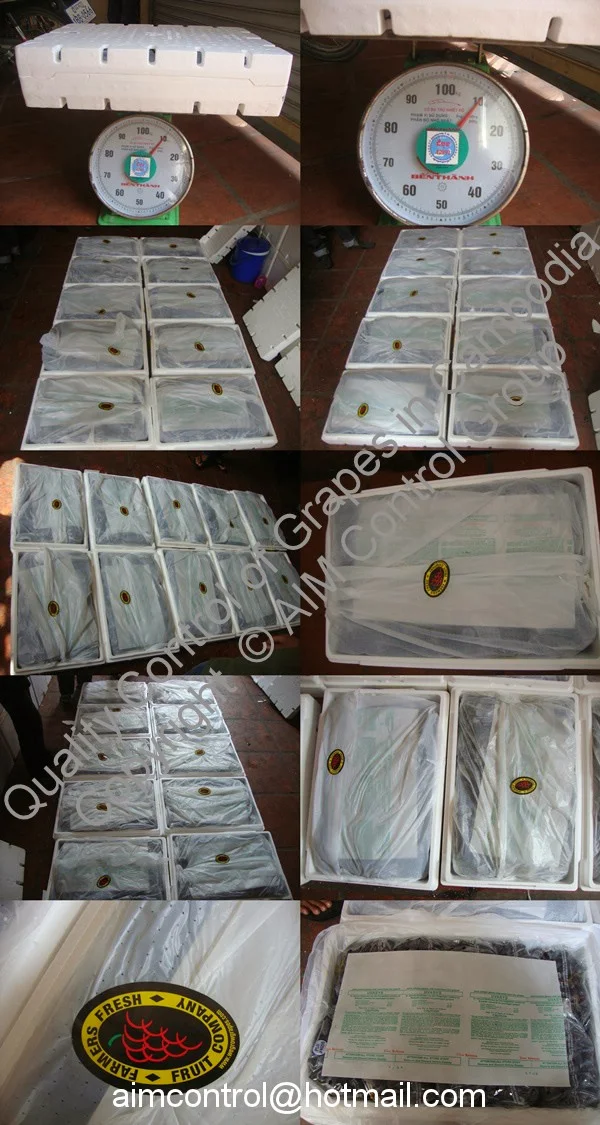Fruit vegetable quality control
AIM Control's fruit inspection and vegetable quality control
Fruit inspection and vegetable quality control:
AIM Control is third party in providing inspection and quality control on Fruit and Vegetable as well other. Email: qualitycontrol@aimcontrolgroup.com, inspection@aimcontrolgroup.com, aimcontrol@hotmail.com, cell: +84903615612.
The followings are AIM Control’s Fruit Quality Control & Vegetable Inspection technique procedure given below:
1. Identify the critical points in the process follow sheet which contributes to the major quality characteristics.
2. Sample each critical point depending upon batch or continuous operation what is being sample, and so what extent it is critical.
3. Evaluate and relate quality at critical successive stages to costs and yields.
4. Relate costs to deviation from specified levels.
5. Evaluate data collected against standards and legal requirements.
6. Providing consistent system for orderly continuous evaluation of quality from the selection of raw material through different stages of processing.
7. Diagnose problems and predict troubles before they happen. Determine the extent of drifts and shift in production, and minimize or localize deficiencies.
8. Evolve a system to determine how well the quality control programmer is succeeding.
Fundamentals and technique of quality control are basically the same irrespective of whether one is dealing with a food product or automobile part.
Taking canned fruit in syrup as an example, the critical control point of inspection are followings:
1. Raw Material:
The importance material used are fruit, sugar and citric acid. Water used in making syrup should be suitable for purposes of canning.
a. Fruit: Variety maturity, extent of spoilage or damage, pesticide residues, deterioration in handling and storage, potential contamination, ect. Acceptance and/or ‘variable sample.
b. Sugar & citric acid: Sugar & citric acid with respect to physical and chemical characteristics and former, in addition, with regard to microbiological quality (total count, type, ect.)
2. Tin Containers:
Type of tin plate, weight of tin coating, side seam, and double seam accuracy.
3. Washing of fruit:
a. Public health significance.
b. Quality of water
4. Preparation of fruit:
a. Efficiency of preparatory operation like peeling, slicing, coring, trimming, and freedom from damage or diseased portion.
b. Uniformity with respect to color, texture and maturity.
5. Preparation of syrup:
a. Calculation of strength of covering syrup required in relation to total soluble solids in fruit, filled weight of slices, weight of covering syrup added and cut-out brix required in the finished product.
b. control of weight, temperature and uniformity of strength at the time of filling – control chart.
6. Filling:
The coefficient of variation in the weight of empty cans is generally about 4%.
7. Exhausting:
Periodic checks should be made to ensure that the cans coming out of the exhaust box have attained the desired can center temperature. It has direct relation to ultimate vacuum in the can which in turn is related to shelf-life and behavior at different altitudes.
8. Container closure operation
a. Protection of empty containers
b. Cleaning of containers before filling.
c. Maintenance of can seams
d. Measurement of can seams - – external and internal
9. Processing:
a. To be according to good manufacturing practices
b. Pasting of process schedules near retorts
c. Recording of retorting operation
10. Cooling water:
a. Microbiological quality
b. Chlorine content
11. Post-process handling
a. Prevention of filled containers from damage and contamination
b. Cooling
c. Warehousing – temperature, humidity ect.
12. Clean up and sanitation
13. Steam quality.
14. Examination of finished product
15. Sanitation control
a. Sampling
b. Location: product or ingredient contact surfaces and non-product contact surfaces – number of colonies in each case.
c. Visual appearance
d. Microbiological level
e. Rating – good, fair or poor
16. General inspection
a. Raw material receiving department
b. Product preparation area
c. Packing and dispatching area
d. Windows, doors, wall surfaces, floor, ect.
e. Mould, yeast and bacteria, the store must be protected from temperature fall of more than 5 Degree Celsius.
AIM Control's analysis and quality control inspection of fruit and vegetable products. Authoritative, need-based and update, the AIM Control’s action has been principally designed to meet the day to day requirement. Wherever needed, reference values or standards – Central Food Technological Research Institute (CFTRI) PFA, ISI or FAO/ WHO Codex Alimentarius (Alimentary).
Dr Capt. Nguyen Te Nhan / G.D
Agriculture - Industry - Marine Survey & Inspection Group
-------------------------------------------------------
Tel : +84-28-3832-7204
Fax : +84-28-3832-8393
Cell. : +84903615612
E-mail: aimcontrol@aimcontrolgroup.com
-------------------------------------------------------
Tel : +84-28-3832-7204
Fax : +84-28-3832-8393
Cell. : +84903615612
E-mail: aimcontrol@aimcontrolgroup.com
inspection@aimcontrolgroup.com
MSN : aimcontrol@hotmail.com
Whatsapp: +84888889879
https://www.aimcontrolgroup.com
MSN : aimcontrol@hotmail.com
Whatsapp: +84888889879
https://www.aimcontrolgroup.com
-------------------------------------------------------





















